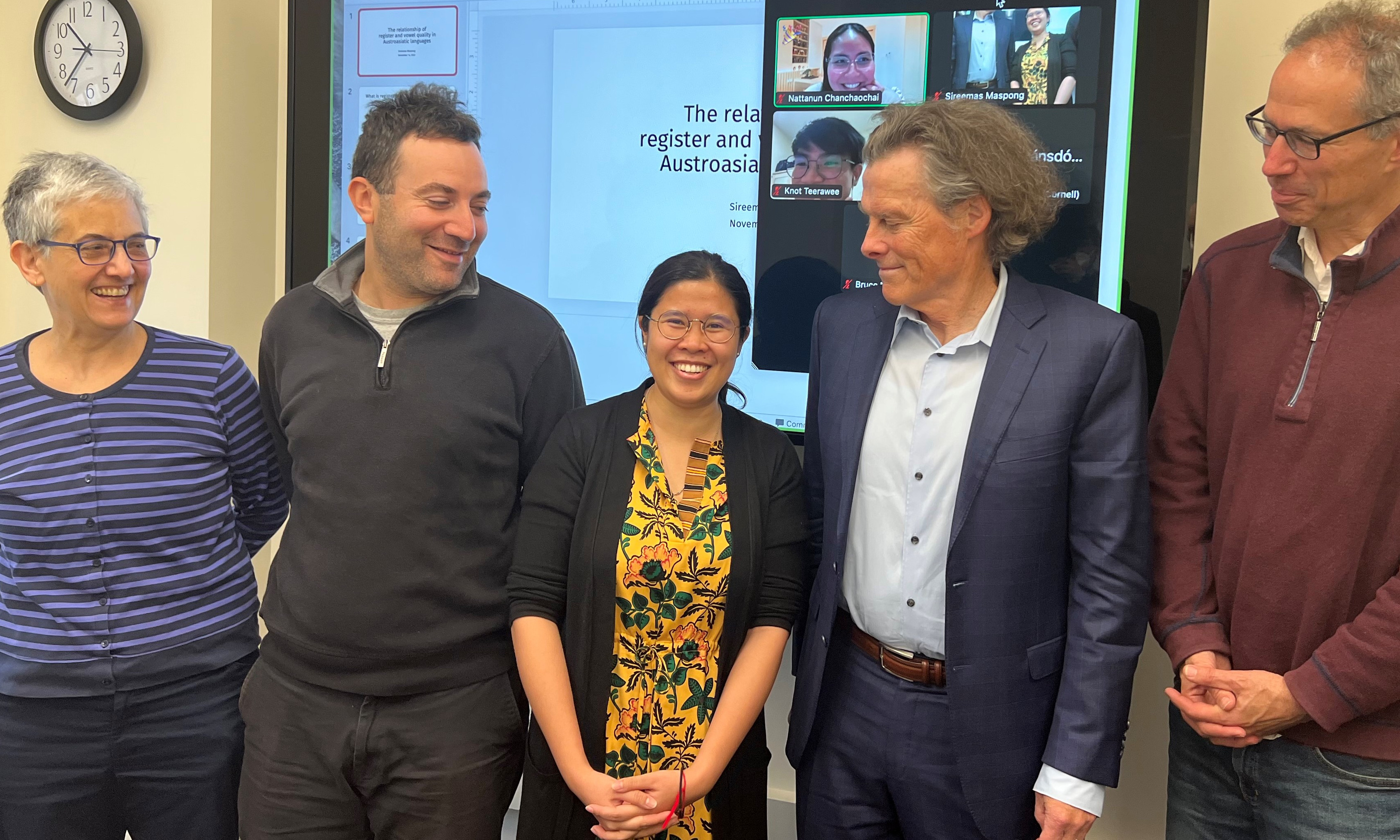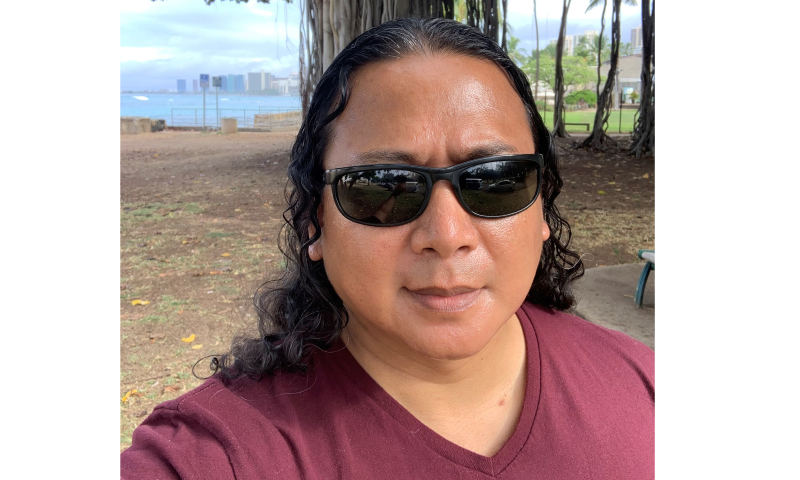News

Sireemas Maspong successfully defends her dissertation
On Nov 14, Ph.D. student Sireemas Maspong successfully defended her dissertation thesis entitled: "The relationship between register and vowel quality in Austroasiatic languages".
Siri is shown here, from the left: committee member Dr. Abigail Cohn, committee Co-Chair Dr. Sam Tilsen, Sireemas Maspong, committee chair Dr. John Whitman, committee member Dr. Michael Weiss.
Abstract:
This dissertation explores the status of voice quality as a cue to register contrast from diachronic and synchronic perspectives. Two main questions are investigated: (i) what is the source of vowel quality change in register languages? (ii) what is the cognitive representation of register? Is vowel quality associated with a separate gesture from other cues to register?
We explore these issues from a historical study and two acoustic studies of three Austroasiatic languages: Khmer, Eastern Khmu, and Chanthaburi Khmer.
This dissertation shows that vowel quality distinction can derive directly from the onset voicing contrast. Furthermore, we propose two possible gestural representations: (i) vowel quality and voice quality as cues to register are associated with a single gesture, or (ii) they are associated with separate gestures, but the two gestures are coordinated.
14th November 2022

Brynhildur Stefansdottir conducts field research in Iceland
PhD Candidate Brynhildur Stefansdottir traveled to her native Iceland in August to perform field research for her dissertation on the reduction of voiced fricatives in Icelandic speech.
During her visit she recorded 32 Icelandic speakers for an acoustic production study on the realization of intervocalic fricatives.
During her three week stay she was lucky enough to get several days of sun. stay. Special thanks to her old secondary school Laugalækjarskóli, for allowing her to record there, and to the teachers and employees for being such willing participants!
26th October 2022

Nielson Hul teaches Khmer & presents research at SEALS 2022
Ph.D. candidate Nielson Hul had an extremely busy summer 2022.
He presented his research on Khmer plosives at SEALS 2022 (Southeast Asian Linguistics Society), held at the University of Hawai'i at Manoa on May 18-20, 2022
Nielson also taught Khmer at SEASSI (Southeast Asian Studies Summer Institute), held at UW Madison from June 19 to August 11.
And in between these activities, Nielson somehow found time to teach Khmer to a US government organization.
19th October 2022

Sam Tilsen Awarded Cornell New Frontier Grant
Prof. Sam Tilsen (Linguistics) and Prof. James Sethna (Physics) were awarded a Cornell New Frontier Grant to investigate the emergence of dialects in networks of speakers with random, constrained interactions.
The project investigates the following questions:
- How "spontaneous" is the emergence of dialects?
- What are the conditions under which the speech patterns of individuals organize into different speech styles?
There are many reasons why dialectal variation arises within languages: various geographic, historical, and socioeconomic factors can create asymmetries that allow for different ways of speaking to emerge.
Due to the complexity of these factors, along with logistical challenges in observing speech behavior on sufficiently large spatial and temporal scales, it is challenging to pinpoint the causes of dialect-scale linguistic variation. And yet, the prevalence of such variation raises an important question: is dialectal variation inevitable?
This question is not only of theoretical interest, but also has practical applications for speech-based analysis of group dynamics.
Tilsen and Sethna adopt a hybrid computational and experimental strategy to study dialect emergence.
- Their computational approach is based on an analogy between the evolution of speech behavior in networks of speakers and the emergence of large-scale order in physical systems that are undergoing relaxation processes.
- Their experimental approach involves longitudinal studies in which pairs of speakers are recorded while playing an online map-navigation game.
5th August 2022
